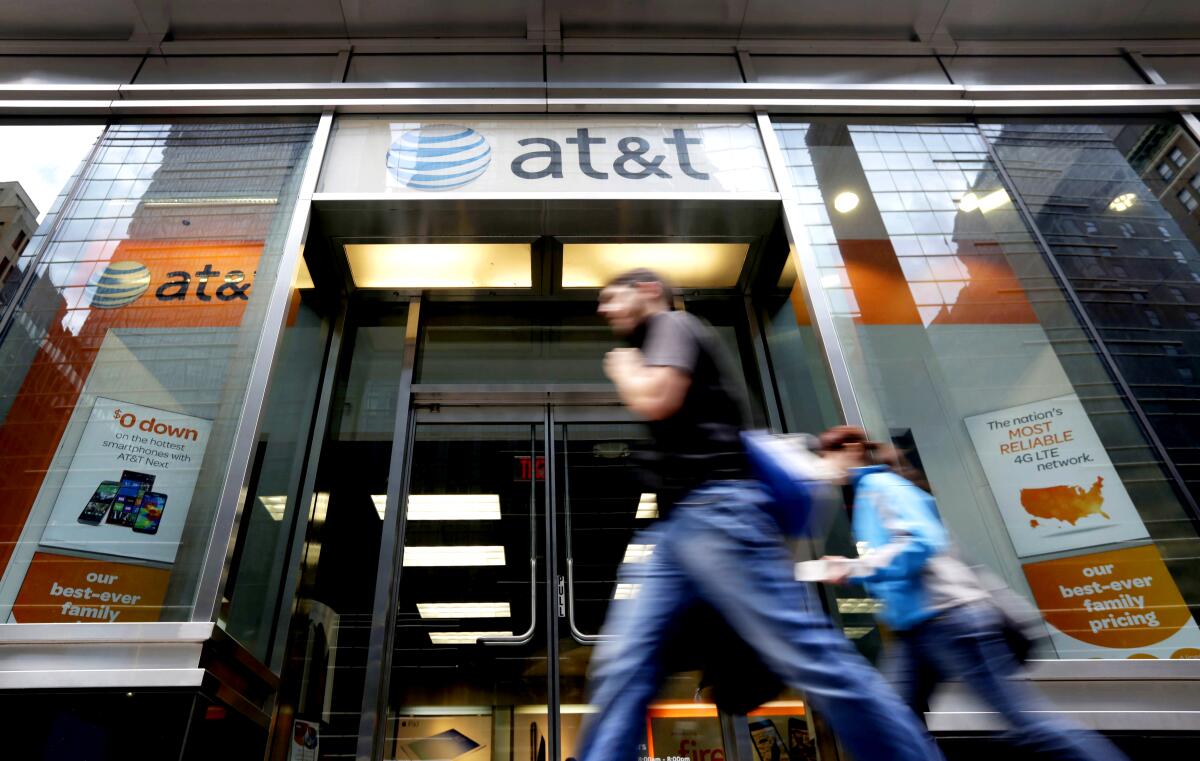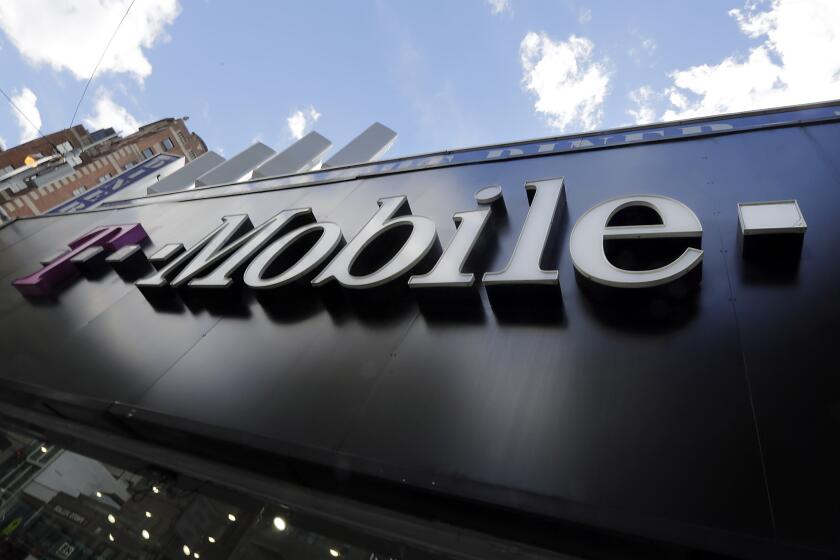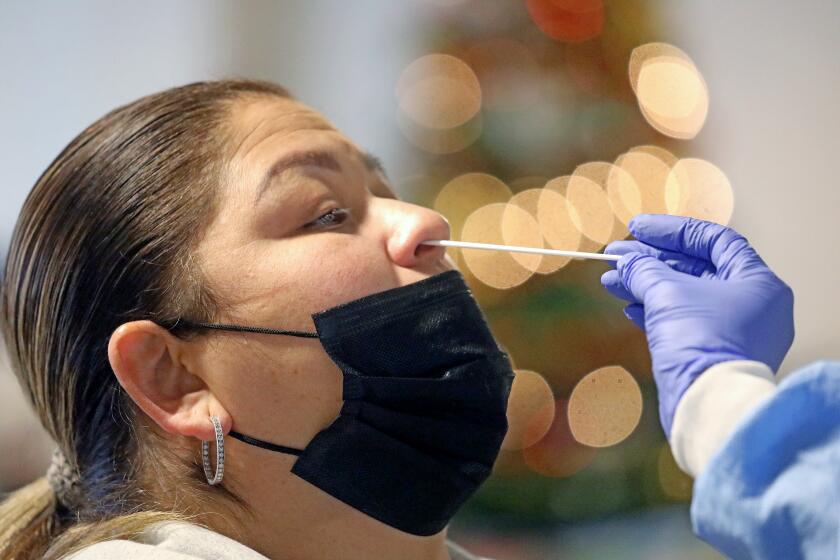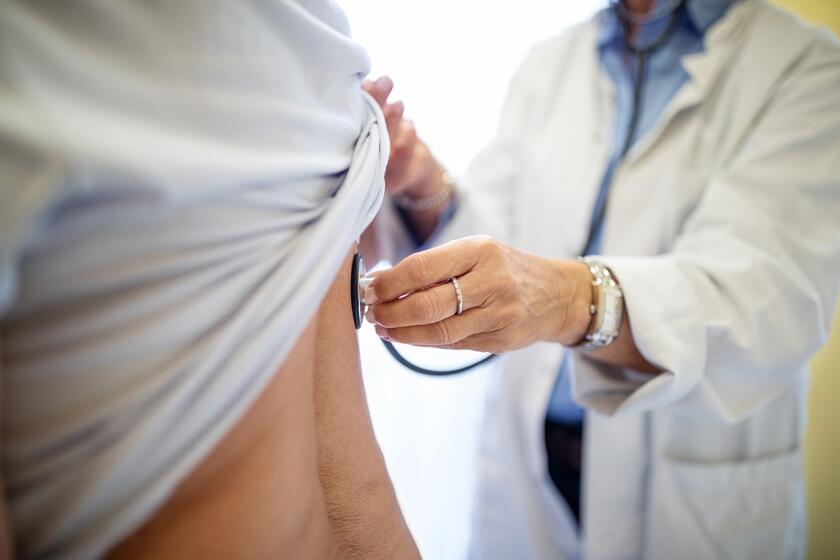If your phone, car or home alarm relies on 3G, you need to prepare for a shutdown

- Share via
Mobile phone companies’ 5G networks are bringing more speed and innovation to consumers, but there’s at least one trade-off: To open up airwaves for 5G, the companies are shutting down older networks that many devices and services still use.
Those older 3G networks were heralded as a revolutionary advancement in bandwidth and connectivity when they debuted in the United States in 2002. Although 3G (short for third generation) started giving way to 4G a decade later, the networks still provide the backbone for older mobile phones and a host of other devices.
In particular, 3G was the network of choice for devices that talked to other devices through the internet, including some fire and burglar alarms, roadside assistance services and personal medical alert devices. And 3G has remained in use because the costs are low. Daniel Oppenheim, chief executive of the alarm and safety monitoring company Affiliated Monitoring, said the components needed to connect to 4G networks were too big and expensive for many devices until recently, which is why 3G-only hardware continued to be in wide use until a couple of years ago.
Yet it was no secret that 3G would eventually be rendered obsolete by newer, more efficient technology that can transmit far more data. AT&T notified its business customers in February 2019 that it would shut down its 3G network within three years, forcing them, their suppliers and consumers to upgrade their equipment.
AT&T, which operates one of the two most extensive 3G networks in the country, has since put a firm date on the shutdown: Feb. 22. Verizon, which operates the other, is planning to shut its 3G system down by the end of the year. T-Mobile plans to pull the plug on the 3G networks it operates, including the one built by Sprint, between March 31 and July 1.
The Alarm Industry Communications Committee, a trade association representing companies like Oppenheim’s, has asked the Federal Communications Commission to delay the 3G shutdown until the end of the year, arguing that disruptions caused by COVID-19 have prevented its members from upgrading roughly 2 million consumers’ equipment. Even if the date is pushed back, however, the end of 3G is coming. Here’s what the shutdown might mean for you and what you should do now to prepare.
Hackers claim to have stolen 70 million Social Security numbers from AT&T days after massive T-Mobile breach. Here are some tips to protect yourself.
Who and what will be affected?
The most obvious casualties of the 3G shutdown will be older phones, tablet computers and smartwatches that rely on 3G to connect to a mobile network. Most of these devices have already been consigned to the recycling bin of history; to see if your device can survive the AT&T 3G sunset, consult the list AT&T has posted online. If it’s not on the list, you have a problem.
Other carriers face similar issues. Verizon doesn’t offer a comprehensive list of compatible devices but has posted examples of popular phones, tablets and other gear that will lose connectivity. T-Mobile hasn’t posted any detailed device information; instead, it has pledged to contact each customer who will be affected by the shutdown.
Bear in mind that a 3G device with Wi-Fi can still run its apps and do just about everything you need it to do — but only if you’re within reach of an open Wi-Fi network and you don’t mind making phone calls through a voice-over-internet-protocol service such as Skype. In other words, your 3G phone or tablet will still work, but it won’t be nearly as mobile.
U.S. consumers replace their smartphones every three years or less on average, which suggests that relatively few 3G phones remain in use. The life cycle is much longer for other 3G devices, however, including alarm and security systems that summon first responders in the event of a break-in, a fire, a carbon monoxide leak or a personal medical emergency.
If these devices or services fail for lack of a network connection, the consequences could be tragic. Oppenheim said that the companies involved have been trying to replace their customers’ 3G-only equipment for some time, but that their efforts have been hampered in multiple ways by the pandemic. COVID-19 has reduced the supply of replacement components and interfered with efforts to install them, he said, in part because some customers didn’t want workers to enter their homes.
As a result, he said, 10% to 15% of these customers aren’t ready to leave 3G. Either their service provider hasn’t been able to upgrade their equipment yet, Oppenheim said, or the customer hasn’t responded to the notices they’ve been sent about the looming problem.
Here’s another problem stemming from long product life cycles: Many cars can summon help automatically after an accident, or connect to a call center with the push of a button, thanks to a built-in cellular modem. But a portion of those cars’ modems connect only to 3G networks.
The most crucial of these services is automatic crash notification, which calls emergency services immediately after a collision bad enough to cause airbags to deploy. That’s especially valuable when the driver is knocked out or incapacitated and there’s no one else on hand to help. Consumer Reports compiled a list last month of the vehicles that will be affected; according to the magazine, “some vehicles just need a software or hardware upgrade, but others — including vehicles from Chrysler, Dodge, Hyundai, Jeep, Lexus, Nissan, Ram, and Toyota — will lose their connections permanently.”
One example is BMW, which says about 1 million cars in model years 2018 and older will be hit. Jay L. Hanson, a spokesman for the carmaker, said some of those vehicles will be eligible for a free upgrade, and those owners have been contacted by the company. For the rest, the ConnectedDrive and BMW Assist services that came with the car simply won’t work any longer.
One other example is in the trucking industry, which relies on electronic logging devices to comply with driver safety rules and to help track containers. Replacing all the 3G-reliant devices is a big, time-consuming job that has been complicated by the intense demand for trucking services and the extended shortage of microchips.
That’s just a partial list. Any device that’s more than a few years old that connects wirelessly and directly to the internet could need a software update or a replacement for its cellular modem to continue connecting after the 3G shutdown. One example is the alcohol-monitoring ankle bracelet worn by some offenders to make sure they don’t drink again after they’re released.
By buying the naming rights to the arena formerly known as Staples Center, Crypto.com shone a national spotlight on the niche field of cryptocurrencies. Here is a guide to the world of bitcoin, digital wallets, smart contracts and other key pieces of the crypto puzzle.
Why is this happening?
Cellular networks transmit data over airwaves leased from the federal government. Although 3G and 5G use different technologies to send and receive data, they operate at some of the same frequencies. But according to AT&T, they can’t coexist on those frequencies — the airwaves assigned to 3G customers cannot also be used for 5G customers.
AT&T told the FCC in August that serving even one 3G user would require the company to reserve a significant chunk of its airwaves in the 850-megahertz band, despite 3G customers collectively using only 4% of AT&T’s 3G network capacity. Turning off 3G will allow the company to double the amount of 850-MHz airwaves devoted to 5G, the company told the FCC in October, vastly improving its service to those customers.
What do you need to do?
In most cases, the devices that rely on 3G chips are providing services that people have to pay for, whether it’s the ability to place calls or summon first responders automatically. So the companies selling those services have already been reaching out to their customers to help them keep their services going.
In other words, if you’re affected, you’ve probably gotten a letter or email already (and possibly several of them) telling you what the problem is and what your options are. If you haven’t responded yet, it’s a good idea to do so now.
Given how much junk mail and spam we all get these days, you may have tossed out those communications without giving them a second thought. So if you have a mobile phone, smartwatch, tablet, medical alert device or car that’s more than 3 or 4 years old, or you have an alarm service, check with your phone company, service provider or device manufacturer to see whether you’ll be affected and, if so, what your options are.
There is information aplenty online. Start with your mobile phone company’s 3G page — here are links for AT&T, T-Mobile and Verizon — and work from there. The single most helpful resource for phone, tablet and watch compatibility appears to be the list compiled by AT&T.
Numerous companies that sell alarm systems and monitoring services warn that they will not be able to upgrade all their 3G-dependent equipment by the time AT&T shuts off its 3G network this month. The FCC is still considering the alarm industry’s petition for a delay; you can make your views known through the agency’s electronic filing system, citing docket No. 21-304. If you think that the cutoff is happening too soon, you can urge your representatives in the U.S. House or Senate to weigh in.
Fake COVID-19 testing sites are popping up in Los Angeles and Orange counties. Here’s what to look out for.
How much will this cost you?
An AT&T spokesperson said “a substantial majority of customers” will be able to get a free replacement phone for their 3G device. The company is also offering 5G phones starting at $72.
T-Mobile says that customers on the Sprint 3G network will be able to upgrade to a new device that will work on T-Mobile’s 4G and 5G networks “at no cost.”
People with prepaid phone services, however, are in a different boat. Mobile companies don’t typically offer free phones with their no-contract services, so anyone with a 3G phone will have to buy a new one for prepaid services, such as Verizon-owned Straight Talk Wireless.
If you have a 3G-dependent tablet or smartwatch, it appears that you’ll need to buy a replacement if you want to continue connecting through the cellular network instead of Wi-Fi. None of the carriers’ websites were offering free replacements on that front.
As for alarm systems and medical alert devices, Oppenheim said it’s the service provider’s responsibility to upgrade the equipment to adapt to the change in networks — “by the way, at tremendous expense to the company, not to the consumer.” It’s analogous to cable TV service, where the cable company is responsible for addressing any problems with its cable boxes, he said.
If your claim is denied, you have a right to appeal and ask your health insurer to take another look.











